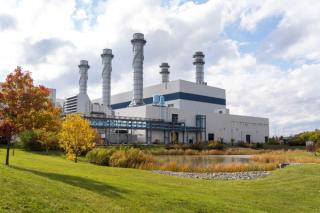
Innovative R&D support for LNG supply chain measurements (QMRV)
- Client Name
- Cheniere Energy
- Location
- Multiple sites, United States

Challenge
Natural gas supply chain operations and associated emissions are complex and vary geographically, as well as across each stage of the supply chain.
Research has generally shown a gap between large-scale top-down methane emission measurements and national inventories based on engineering estimates, yet there remains a struggle to reconcile or close this gap. This had led to emerging regulations in the US and Europe focused on measurement-informed inventories (MIIs), and also voluntary reporting frameworks such as OGMP 2.0.
With the emergence of regulatory and public focus on measurement-informed inventories, the industry faced challenges in accurately quantifying and reporting methane emissions from multiple emission sources at each facility. Employing novel, yet unproven technologies and reconciling on-ground operational data with measurement data beyond snapshot estimates proved difficult. Cheniere launched the QMRV (Quantification, Monitoring, Reporting, and Verification) R&D initiative in 2021 to tackle this challenge, deploying multiple, multi-scale novel technologies and field-testing science-based protocols for GHG emissions reporting across the LNG supply chain.
Solution
Prior to field deployment, SLR collaborated with an academic research team and Cheniere to draft QMRV protocols, a standardized approach to measuring and reporting emissions at upstream, midstream, and LNG facilities. The protocols called for employing multiple technologies, from traditional OGI cameras to novel emerging technologies such as Gas Mapping LiDAR, drones, satellites, and even continuous emissions monitors. These protocols also defined the standards for enhanced facility monitoring throughout the R&D project, as well as preparing operator inventories at the conclusion of the project.
Armed with the draft protocols, operators within Cheniere's supply chain as well as Cheniere began field testing the protocols and measurement technologies. The facilities spanned production, gathering & boosting, processing, transmission compression, storage, and liquefaction and represented several unique natural gas basins.
As the Project Manager for this program, SLR coordinated multi-scale field measurements, led data collection efforts with operators, facilitated collaboration between academic and operational parties, and supported the analysis and interpretation of the results. Field work included aerial flyovers, drones, and ground-level surveys throughout the project.
Impact
The results of Cheniere’s QMRV research led to seminal findings on how to transform snapshot measurements taken at different scales into MIIs at the site level. Further, the research identified the strengths and limitations of novel technologies and highlighted key data gaps between top-down measurements and traditional bottom-up operator inventories, including the limitations of each. The QMRV research has greatly informed Cheniere in establishing its corporate methane emissions targets and achievement of the Gold Standard under OGMP 2.0. The research has provided new insights that can be applied under regulatory or voluntary design, yielding better estimates to inform mitigation strategies.
This research culminated in four peer-reviewed publications, including SLR as a contributor to the project:
- Multiscale Methane Measurements at Oil and Gas Facilities Reveal Necessary Frameworks for Improved Emissions Accounting | Environmental Science & Technology
- Toward Multiscale Measurement-Informed Methane Inventories: Reconciling Bottom-Up Site-Level Inventories with Top-Down Measurements Using Continuous Monitoring Systems | Environmental Science & Technology
- Informing Methane Emissions Inventories Using Facility Aerial Measurements at Midstream Natural Gas Facilities | Environmental Science & Technology
- Evaluating Development of Empirical Estimates Using Two Top-Down Methods at Midstream Natural Gas Facilities

